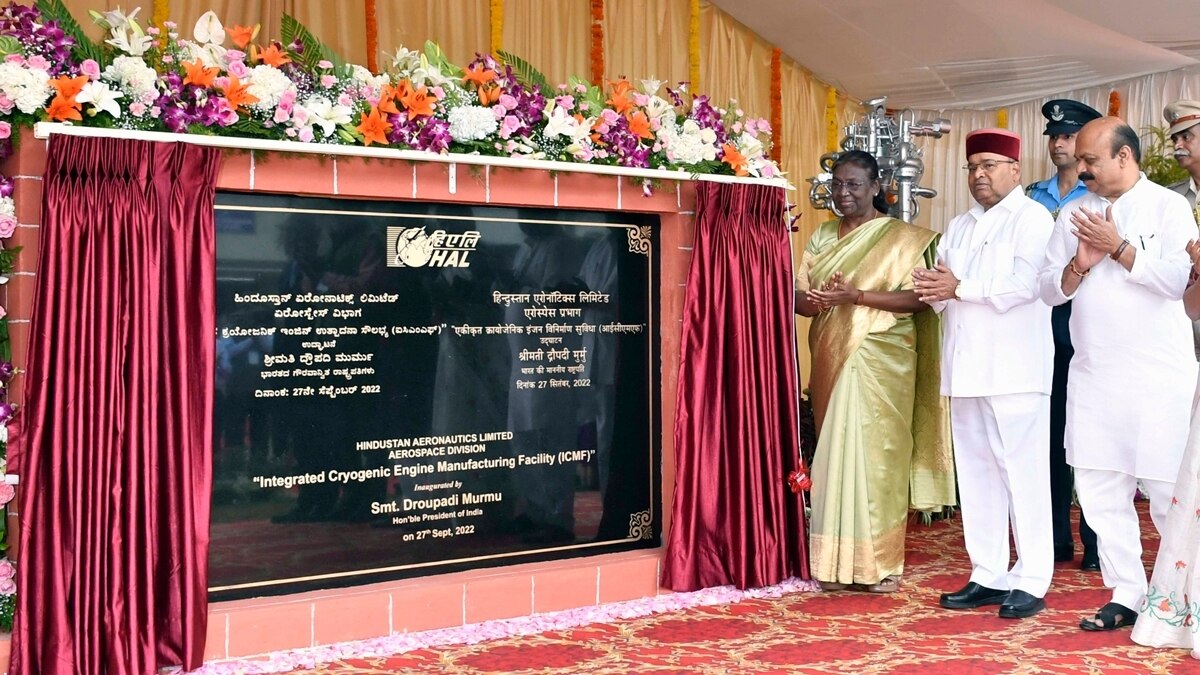President Murmu inaugurates HAL's new facility to build cryogenic engines for Isro rockets
The Integrated Cryogenic Engine Manufacturing Facility will be used in the production of cryogenic engines to be used by Isro in its rockets.

In Short
- The facility houses 70 hi-tech equipment and testing facilities
- The facility has been developed under an MoU signed between HAL and Isro
- Cryogenic engines are one of the most commonly use engines in launch vehicles across the world
President Droupadi Murmu on Tuesday inaugurated the Integrated Cryogenic Engine Manufacturing Facility in Bengaluru. The facility under the Hindustan Aeronautics Limited (HAL) will cater to the entire rocket engine manufacturing under one roof for the India Space Research Organisation (Isro).
The engine manufacturing unit is set to boost Isro's capabilities in developing and building cryogenic engines for its rockets as it pushes the envelope with several new missions beyond Earth's orbit.
"It is a historic moment not only for HAL and ISRO but also for the whole country to have a state-of-the-art facility to manufacture cryogenic and semi-cryogenic engines," President Murmu said, as she inaugurated the facility.
Also Read | For our dinosaurs: Earth strikes back as Dart bangs asteroid in epic mission
Built in an area of 4,500 square meters, the facility houses 70 hi-tech equipment and testing facilities for manufacturing cryogenic (CE20) and Semi-cryogenic (SE2000) Engines.

These engines will be used by Isro in its launch vehicles to propel satellites and humans into space in the near future. The facility has been developed under an MoU, which was signed between HAL and Isro in 2013 for establishing the manufacturing plant of cryogenic engine modules at HAL's Aerospace Division.
"The commissioning of all the critical equipment for the manufacturing and assembly requirements is completed. The pre-production activities which involve the preparation of the process plans, drawings, and quality plan have also commenced. HAL will start realising the modules by March 2023," HAL had said in a statement.
Also Read | Jupiter was damn close to us last night. This is how it looked
The aerospace division at HAL has been manufacturing liquid propellant tanks and launch vehicle structures for PSLV, GSLV MK-II, GSLV Mk-III, and also stage integration for GSLV Mk-II. The division will now enter into cryogenic engine development, which it says "is a major step in technology up-gradation cum modernization."

It is worth mentioning that cryogenic engines are one of the most commonly use engines in launch vehicles across the world and only a handful of countries have the capability to build these machines. Apart from India, the USA, France, Japan, China & Russia have mastered cryogenic technology.
India joined the elite manufacturing club in 2014 when it successfully flew GSLV-D5 with a cryogenic engine.
Also Read | Nasa to move Artemis-1 moon rocket to safety, launch unlikely in Oct
